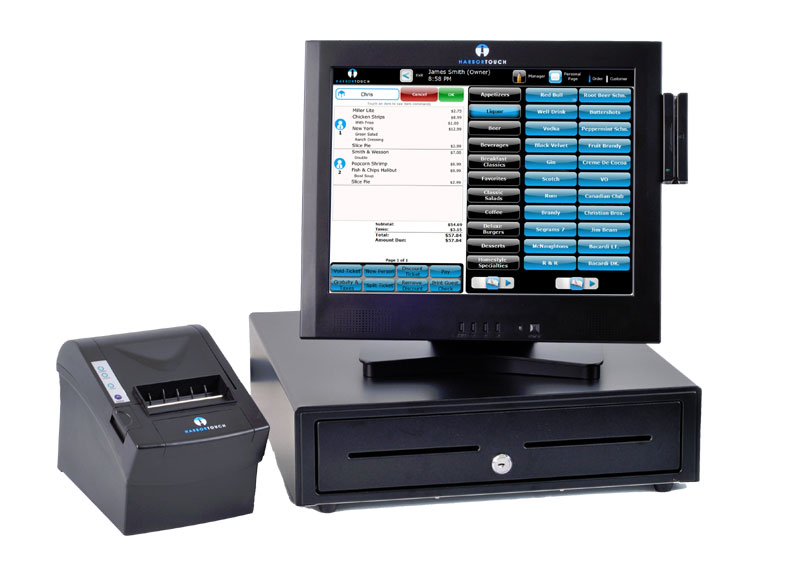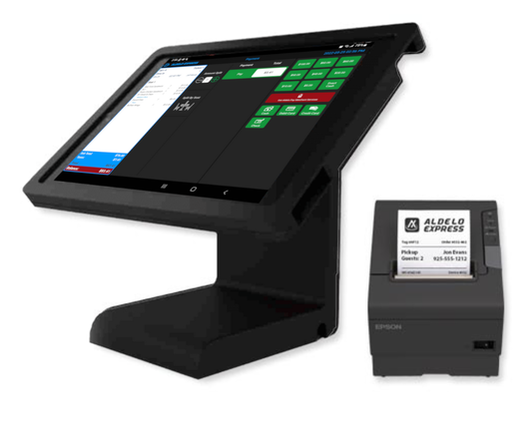Why Restaurant POS Software with CRM tools increases marketing ROI
Wiki Article
Just How POS System Works: A Comprehensive Overview for Organization Owners
A POS system functions as a crucial device for contemporary organizations, incorporating numerous elements to enhance operations. It incorporates equipment like barcode scanners and software program for sales tracking. This system not just processes deals yet likewise takes care of stock and assesses consumer actions. Recognizing its performance can considerably affect an organization's effectiveness and decision-making. What are the vital elements that contribute to this efficiency? Exploring these parts supplies beneficial insights.Comprehending the Elements of a POS System
A Factor of Sale (POS) system is made up of several vital components that collaborate to assist in purchases and take care of company operations. At its core, the hardware consists of devices such as a cash money register, barcode scanner, invoice printer, and settlement terminal, all important for refining sales (Restaurant POS Software). The software element handles stock, sales monitoring, and customer data, providing important insights for business decisions.Additionally, databases save purchase records and consumer information, ensuring data integrity and security. Network connectivity enables real-time updates and access to cloud-based services, enhancing functional effectiveness. Interface, made for ease of usage, allow personnel to navigate the system quickly, minimizing training time. Together, these elements create a cohesive system that streamlines the sales procedure, improves client service, and help in reliable administration of business sources. Understanding these elements is essential for business owners looking for to maximize their POS systemsExactly How Sales Purchases Are Refined
When a consumer makes a decision to purchase, the sales transaction starts a collection of organized actions within the POS system. First, the cashier inputs the products being acquired, which are checked with a barcode reader or by hand gone into. This action fetches product details, including rates and suitable tax obligations, from the system's database.Next, the client exists with the total quantity due. The POS system then processes the payment, whether via cash money, charge card, or mobile repayment methods. For electronic repayments, the POS securely communicates with settlement processors to authorize and confirm the transaction.Once the settlement is validated, the system produces a receipt, which can be published or sent out electronically. This invoice works as proof of acquisition for the customer. Finally, the transaction data is videotaped in the system, making certain precise sales records and financial tracking for the organization.Inventory Administration and Tracking
Efficient inventory administration and tracking are necessary elements of a POS system, as they ensure that companies preserve excellent supply levels and lessen inconsistencies. A robust POS system enables real-time supply updates, mirroring sales and returns immediately. This allows local business owner to keep track of supply levels properly, ensuring that prominent things are easily offered while stopping overstocking of much less preferred products.Additionally, progressed POS systems provide features such as automated supply signals and reorder recommendations, simplifying the purchase procedure. Barcoding and RFID technology boost accuracy in tracking inventory movement, decreasing human error. Considerable reporting devices provide use this link understandings right into stock turn over prices, helping services make educated choices concerning acquiring and product offerings. Eventually, efficient inventory administration with a POS system not just improves operational effectiveness but also boosts client satisfaction by making sure item availability.
Evaluating Customer Information and Insights
Customer data evaluation acts as an effective device for services making use of a POS system. By collecting and analyzing transaction data, services can discover beneficial understandings concerning customer actions and choices. website link This evaluation enables them to recognize buying trends, peak buying times, and popular products, thereby informing supply choices and advertising strategies.Additionally, businesses can segment their consumer base, permitting customized advertising and marketing efforts that satisfy specific demographics or purchasing habits. Recognizing client commitment patterns likewise aids in developing targeted promos and incentives programs.The information gleaned from a POS system can likewise disclose understandings right into consumer responses, enabling services to make informed choices concerning product offerings and solution enhancements. Ultimately, leveraging consumer data efficiently can improve the overall buying experience, foster client satisfaction, and drive revenue development.
Benefits of Executing a POS System
Implementing a POS system uses many benefits that can considerably improve service procedures. To start with, it improves deal procedures, minimizing wait times and enhancing customer contentment. By automating sales processes, services can minimize human error and guarantee precise record-keeping. Additionally, a POS system supplies useful data analytics, making it possible for owners to track sales trends and supply levels in real-time. This insight supports educated decision-making, aiding to enhance stock management and marketing strategies.Moreover, several POS systems integrate with various other business devices, such as accounting software application, streamlining economic monitoring. Boosted employee management functions, such as tracking hours and efficiency, further add to functional efficiency.Lastly, the execution of a POS system can result in raised earnings with boosted customer experiences and tactical understandings, ultimately promoting business growth and sustainability.
Frequently Asked Concerns
What Sorts Of Services Can Take Advantage Of a POS System?

Just how Much Does a POS System Usually Expense?
The expense of a POS system commonly varies from a couple of hundred to a number of thousand bucks, depending upon attributes, hardware, and software program - Restaurant POS Software. Services must consider recurring charges for upkeep, support, and transaction processing when budgeting
Can I Integrate a POS System With Existing Software?
Integrating a POS system with existing software program is frequently practical. Lots of systems provide APIs you can check here or integrated compatibility attributes, allowing businesses to streamline operations and boost capability by attaching different software application applications properly.What Training Is Needed for Team to Make Use Of a POS System?
Educating for personnel to make use of a POS system typically includes understanding software performances, processing transactions, managing inventory, and dealing with client communications - Restaurant POS Software. Practical demos and hands-on technique sessions enhance proficiency and self-confidence in using the system effectivelyWhat Takes place if the Web Goes Down While Utilizing a POS System?
If the internet decreases throughout POS system usage, purchases might be interrupted. Lots of systems provide offline capacities, allowing standard operations to continue, yet full functionality, consisting of real-time stock updates, will be limited.Report this wiki page